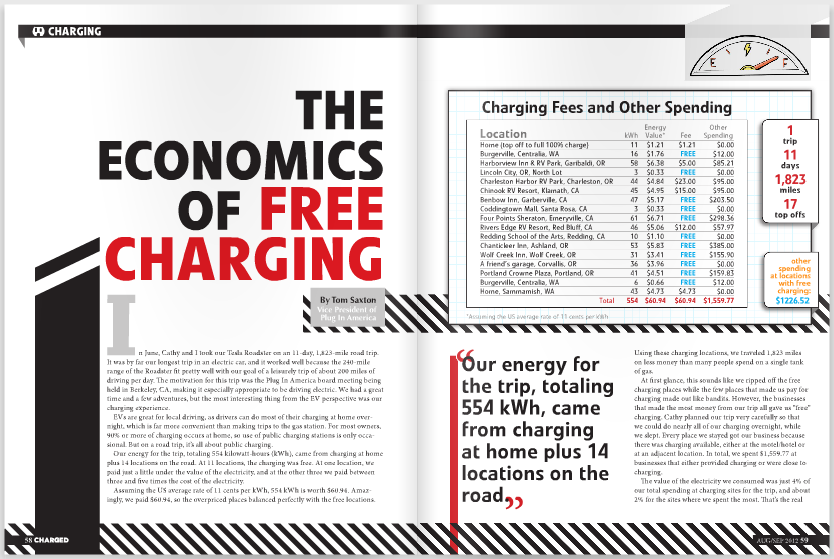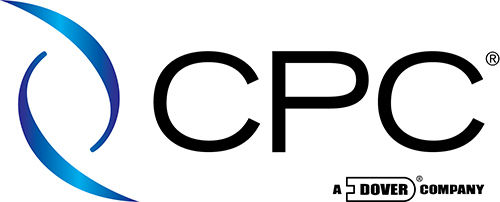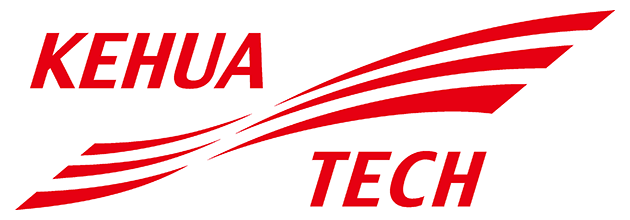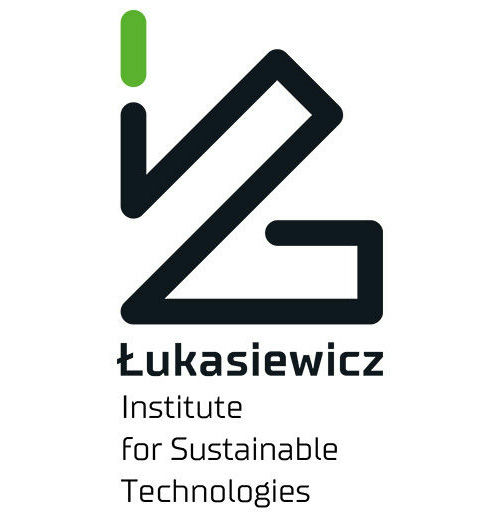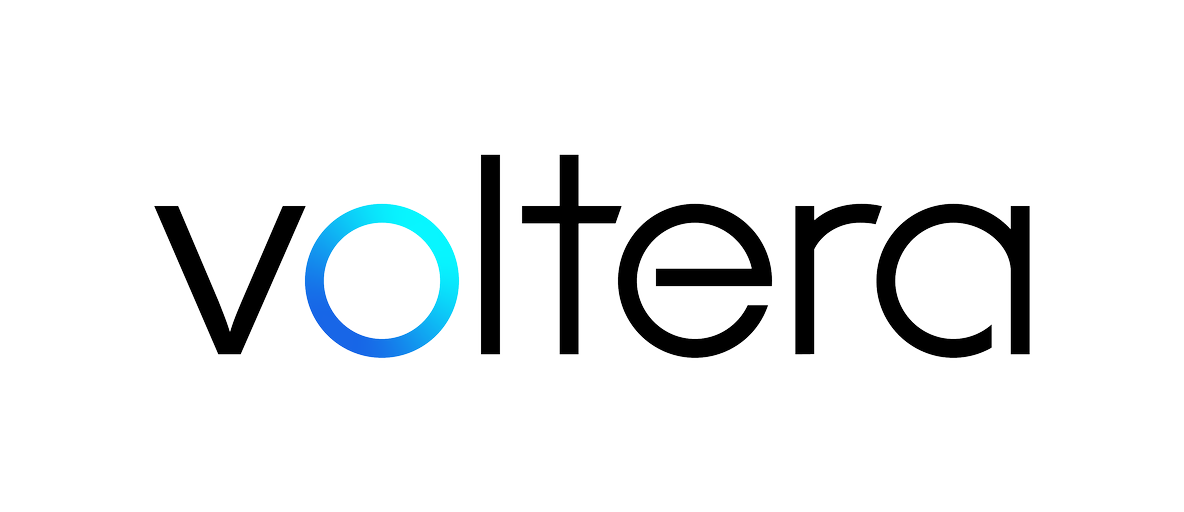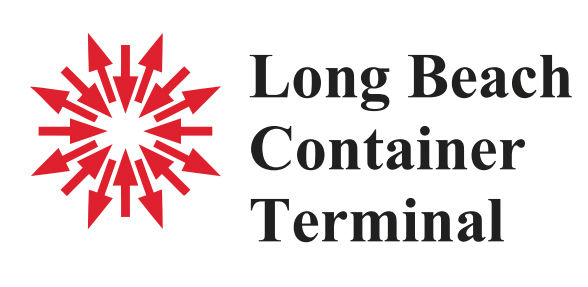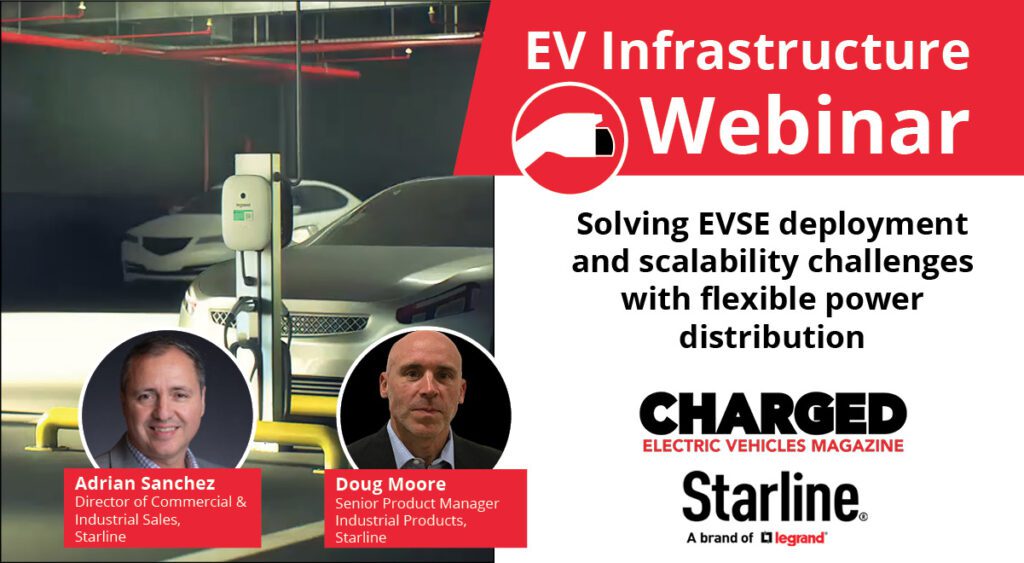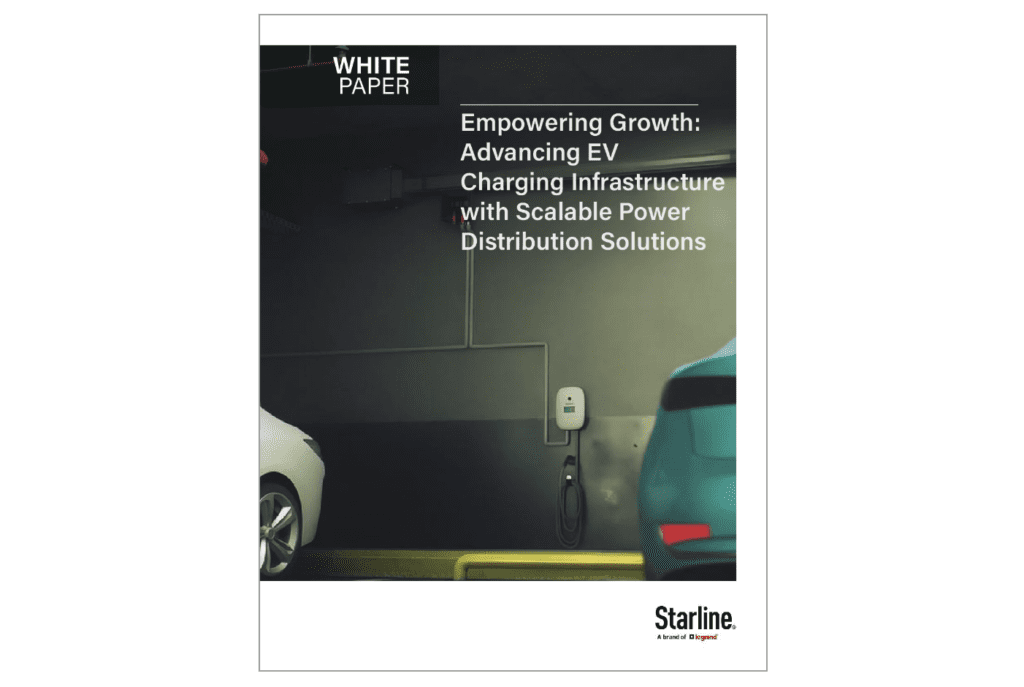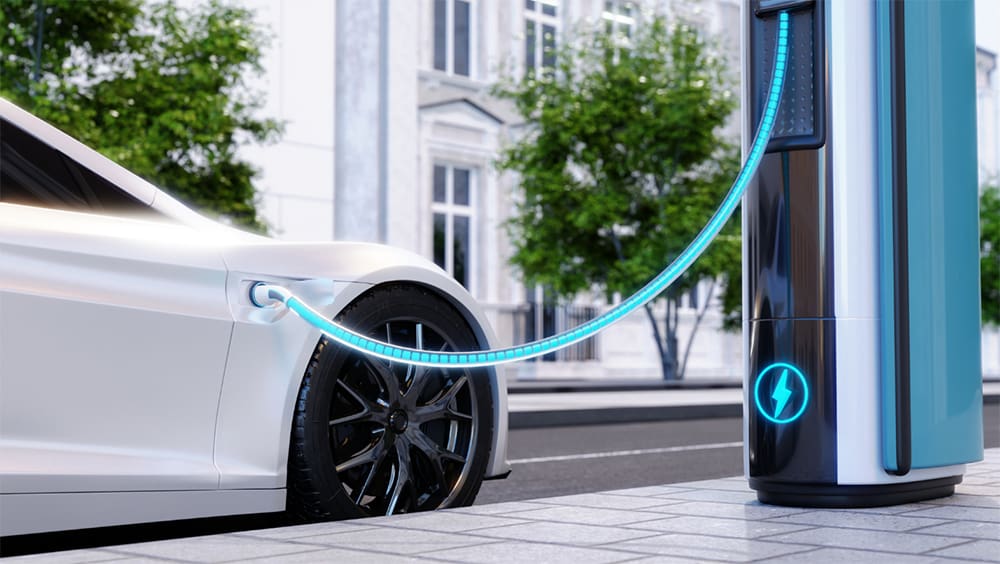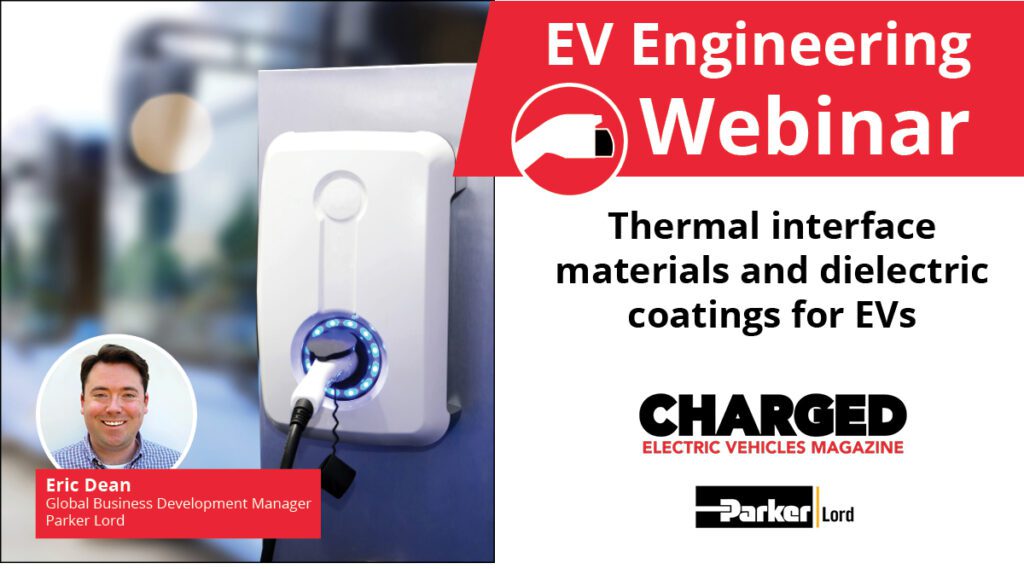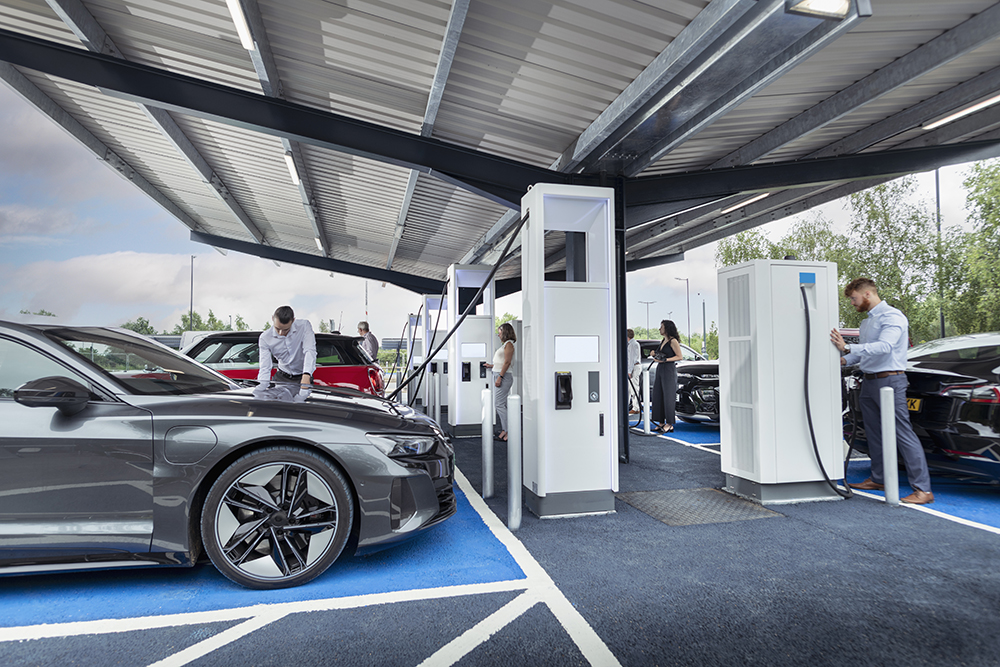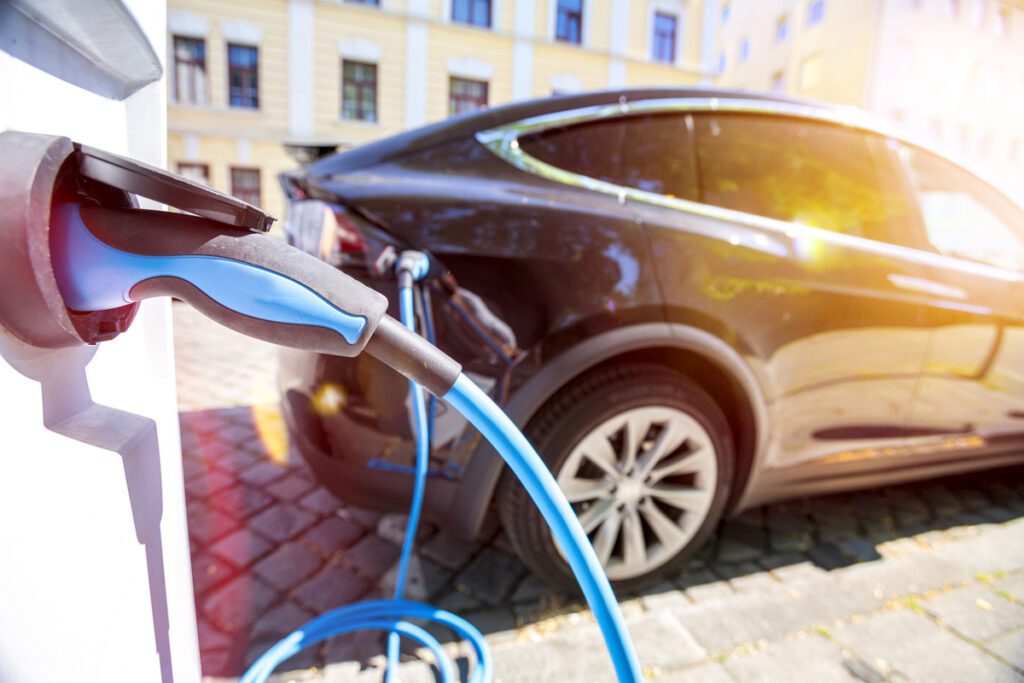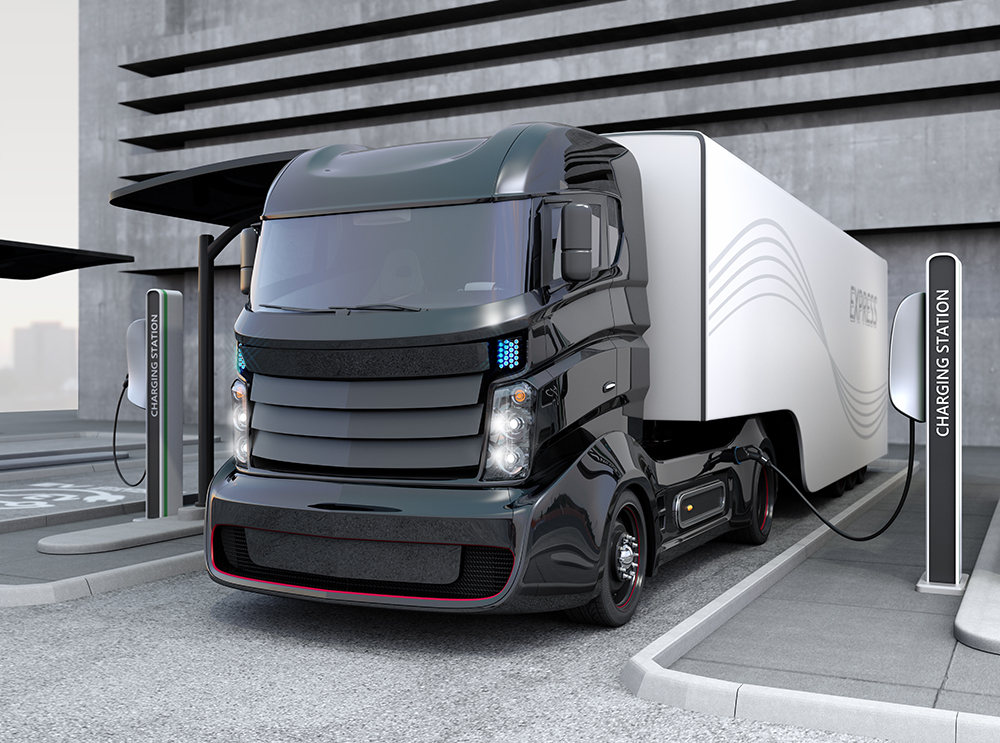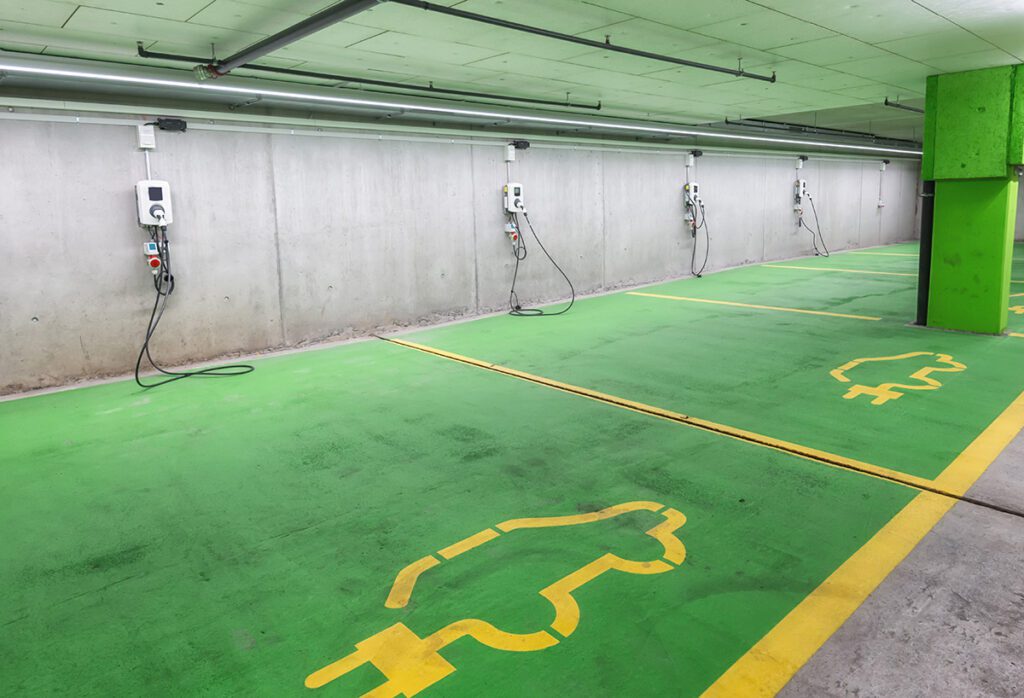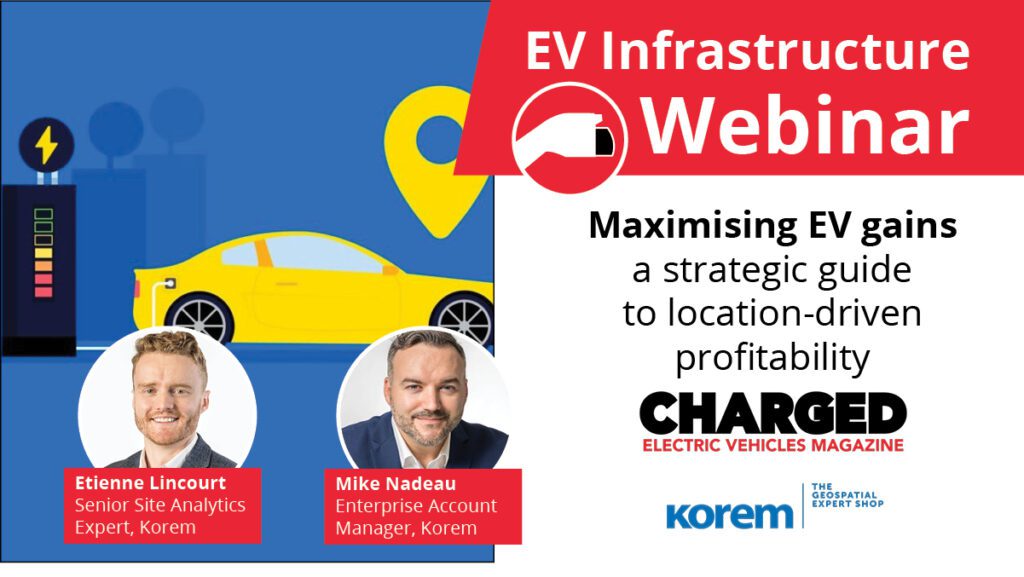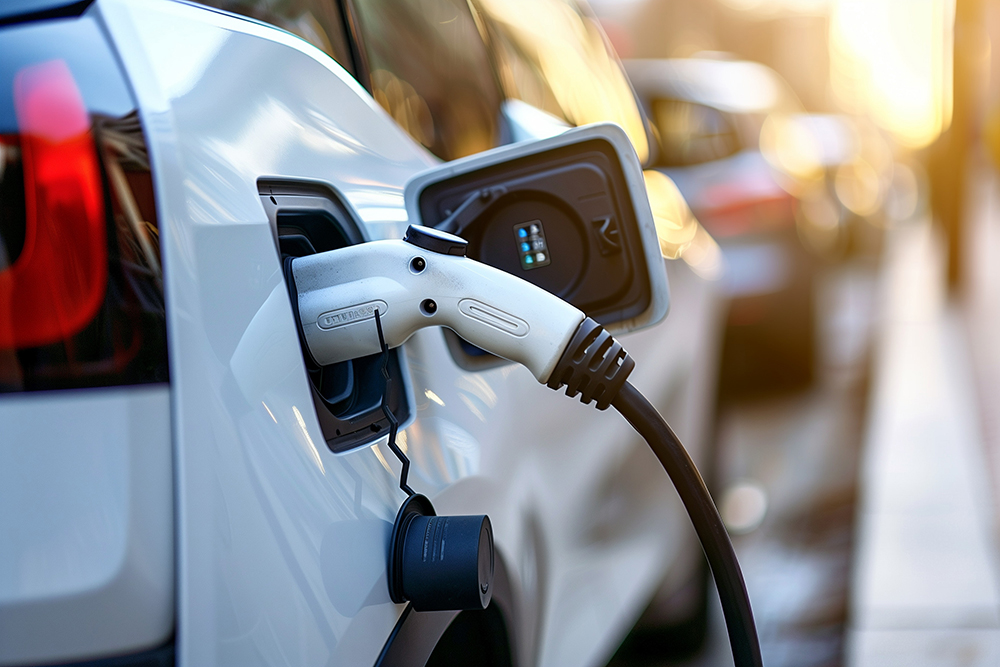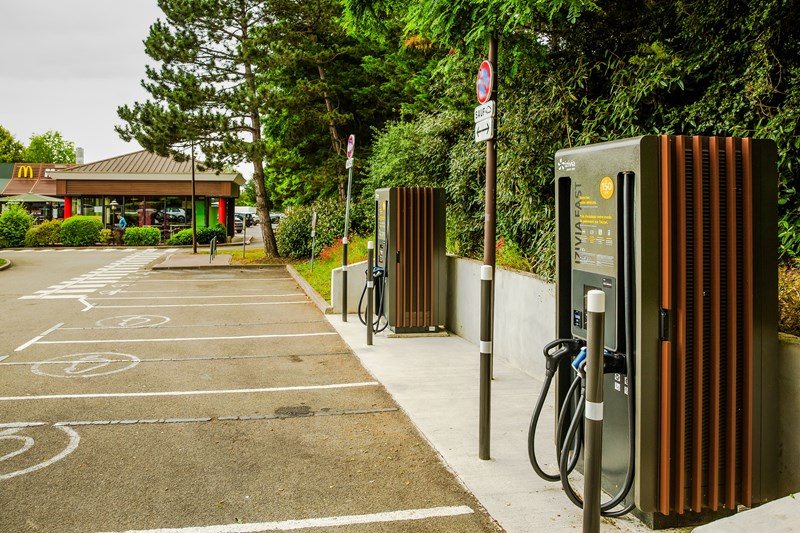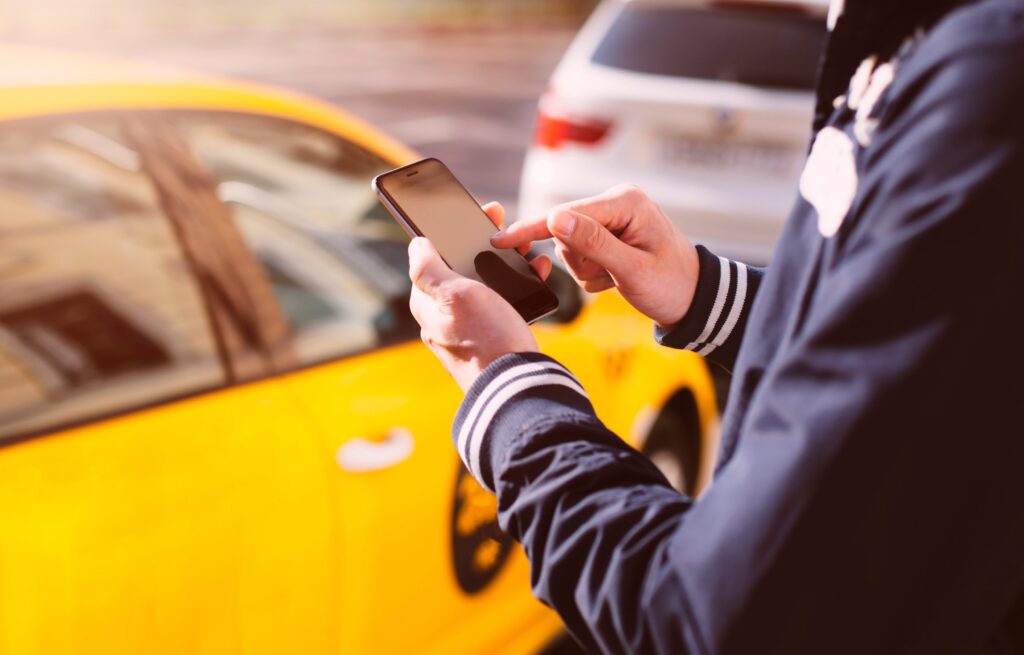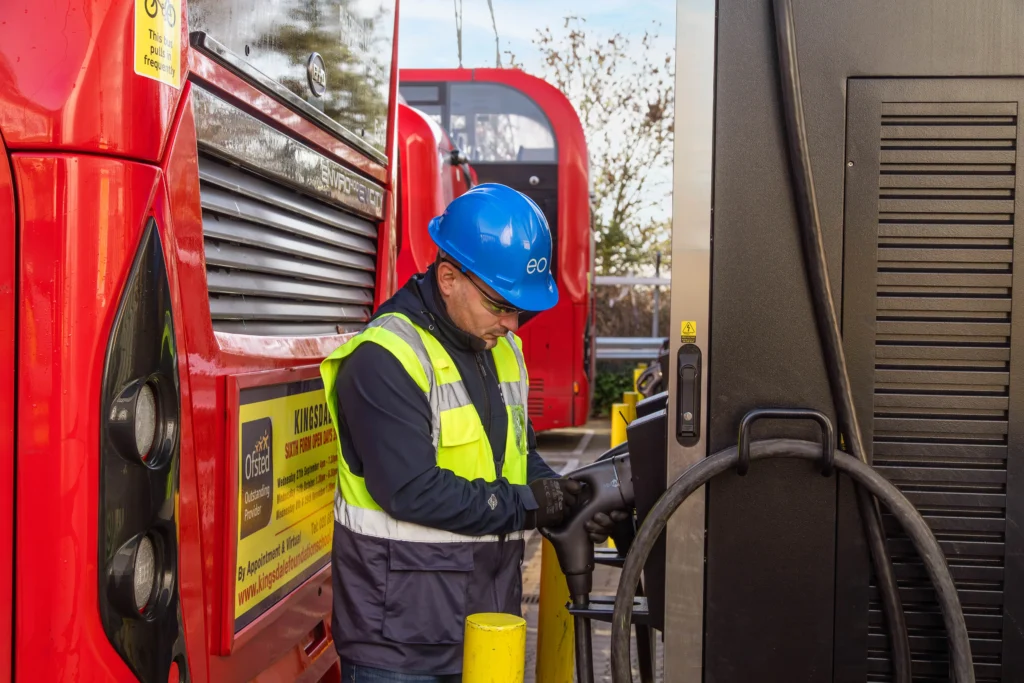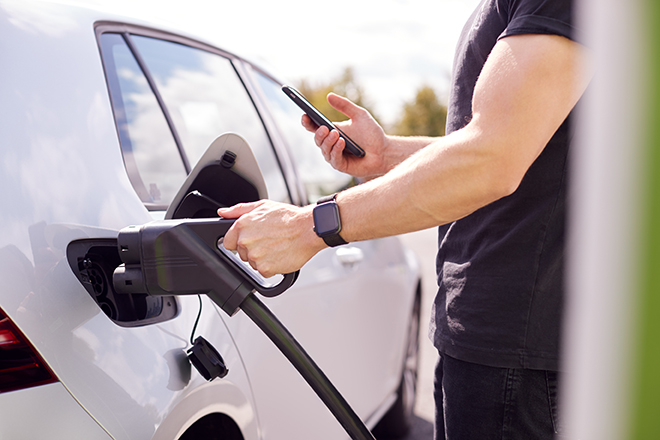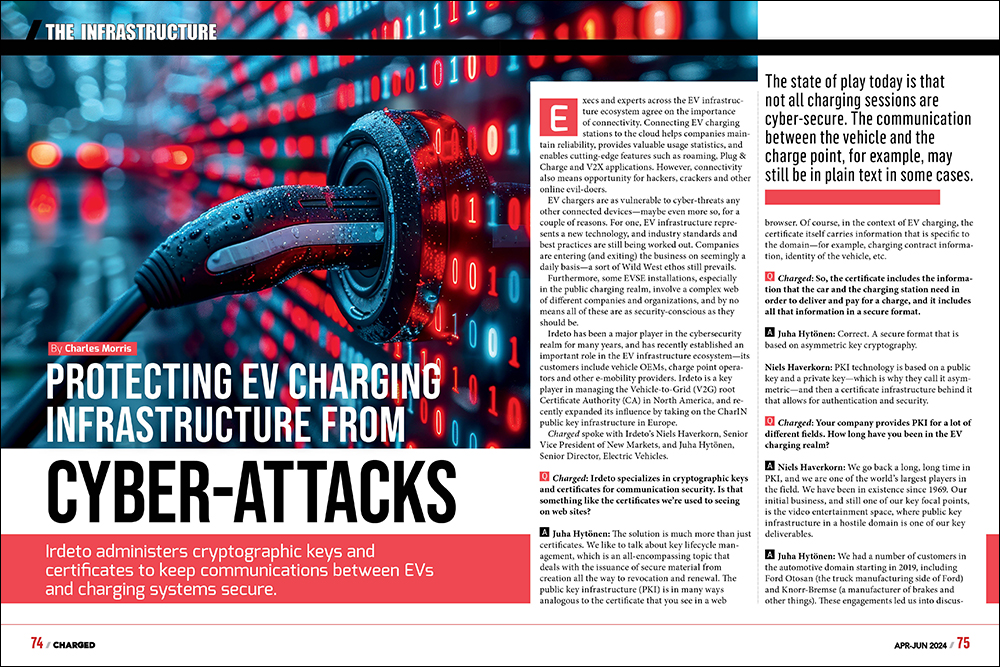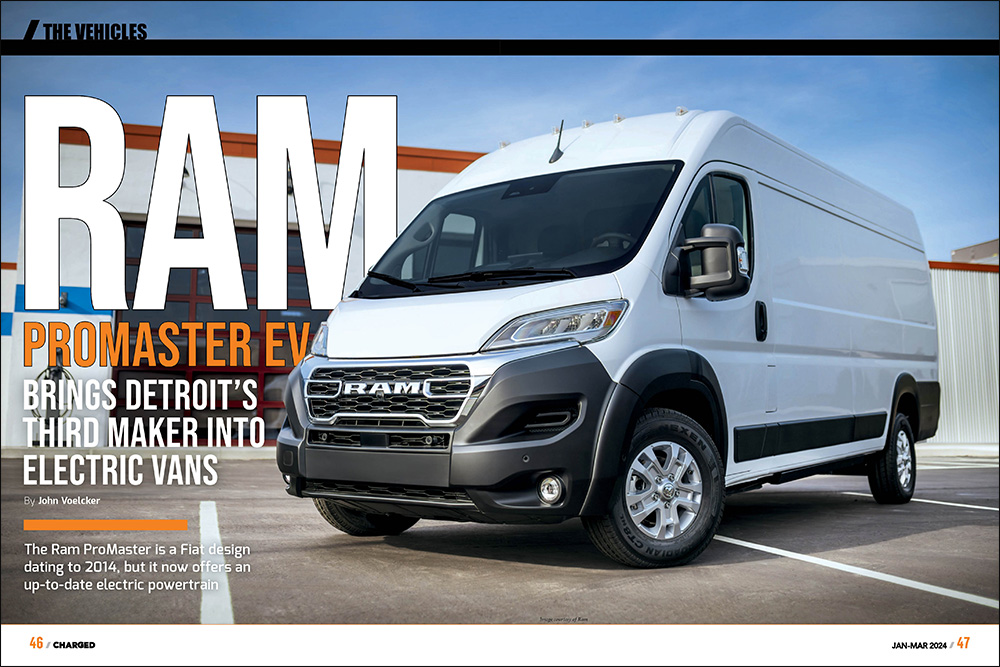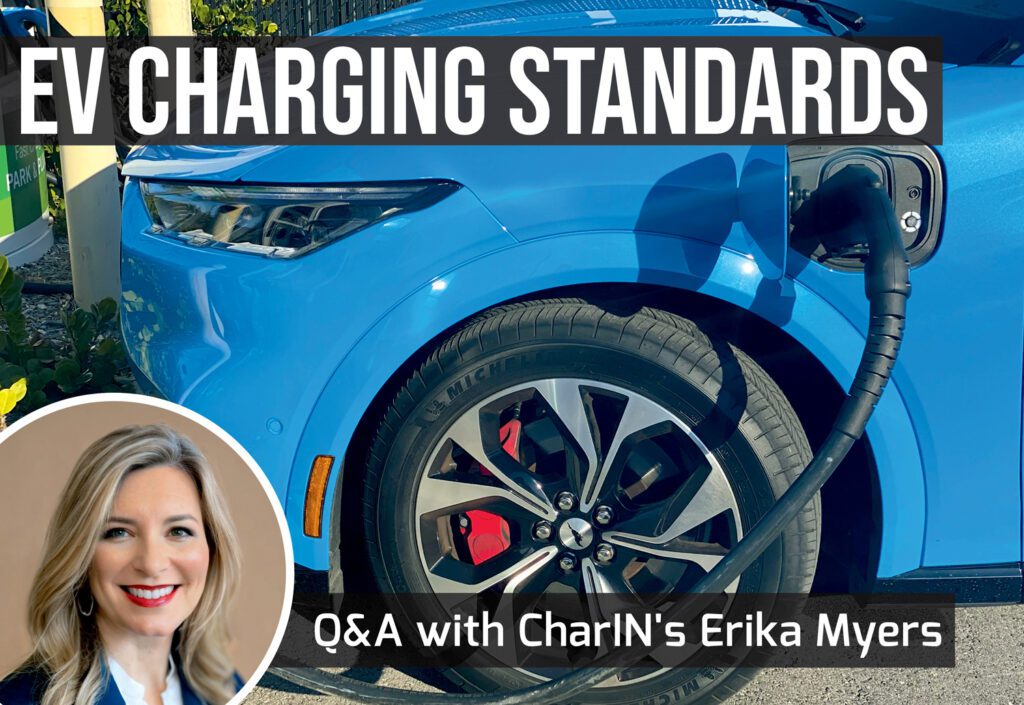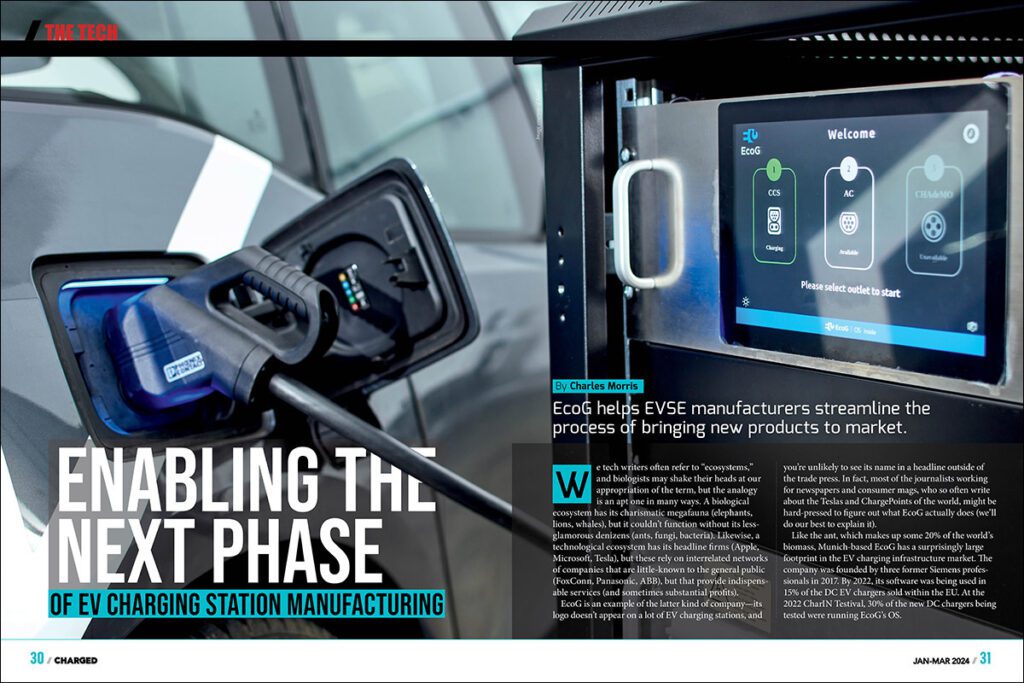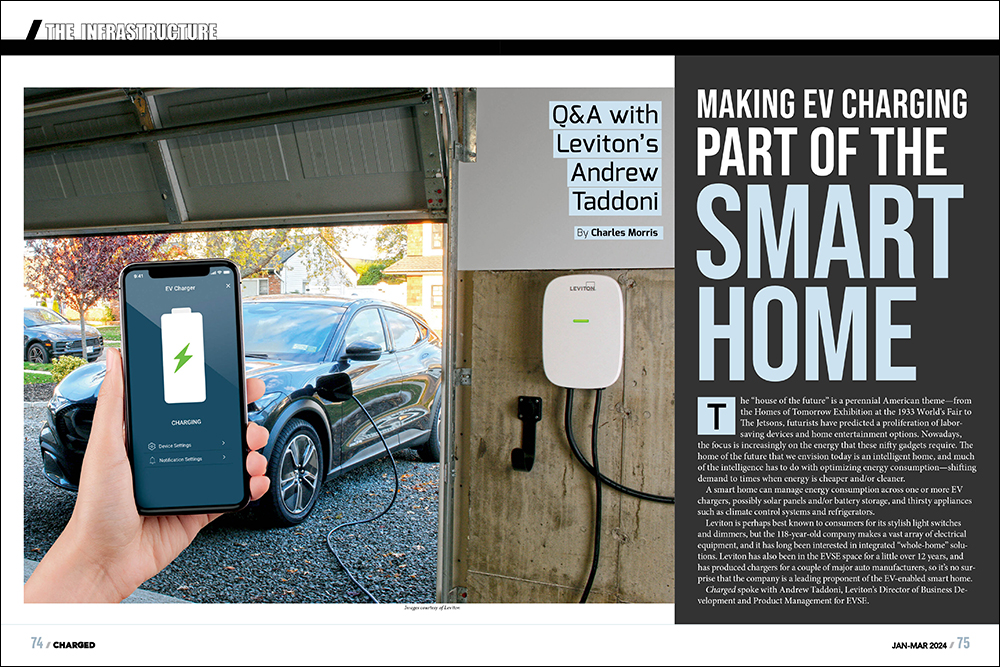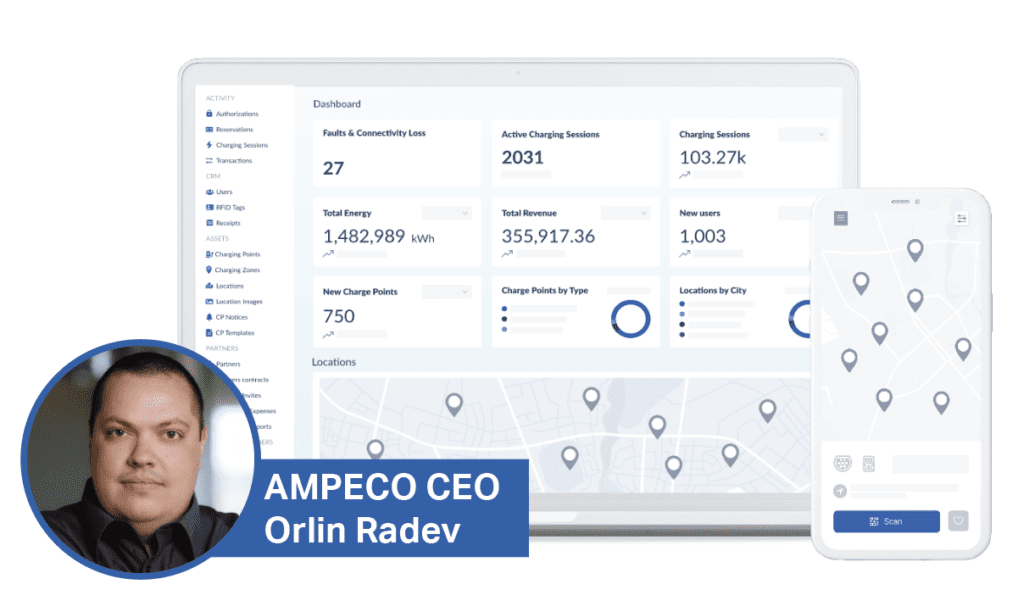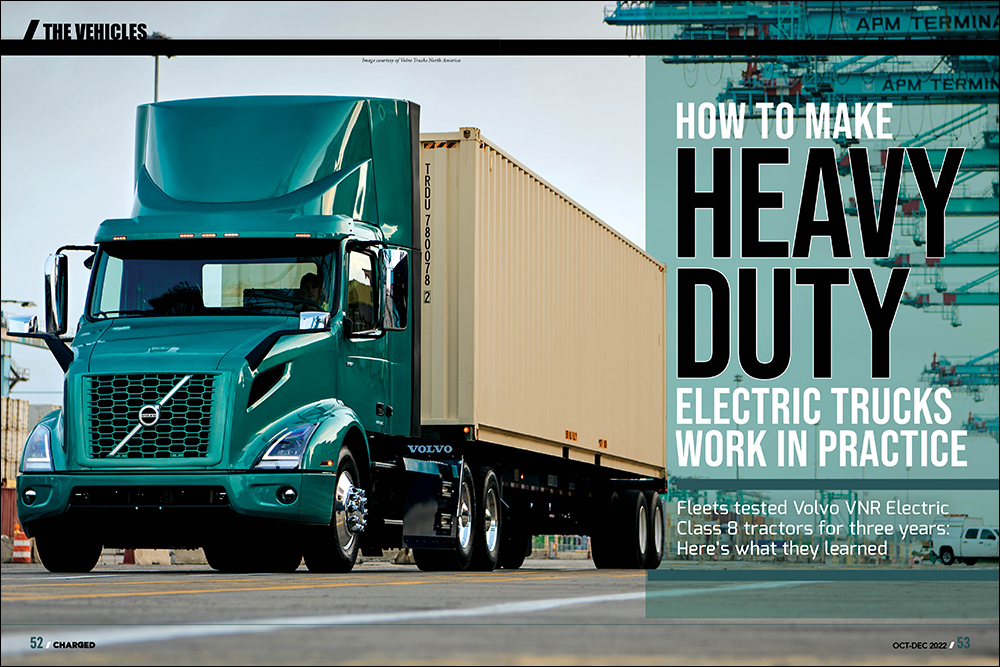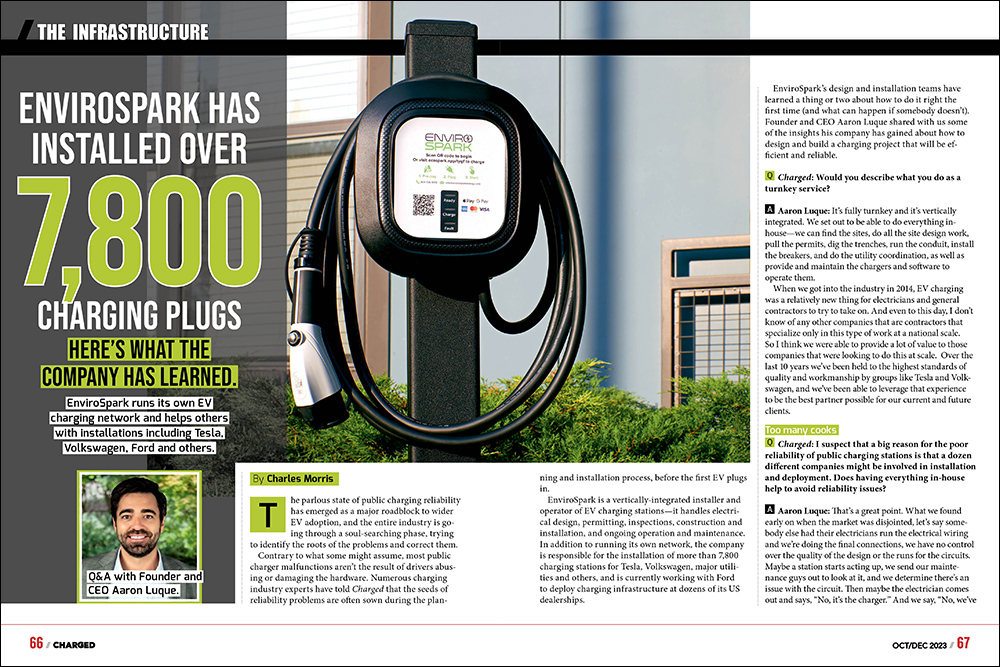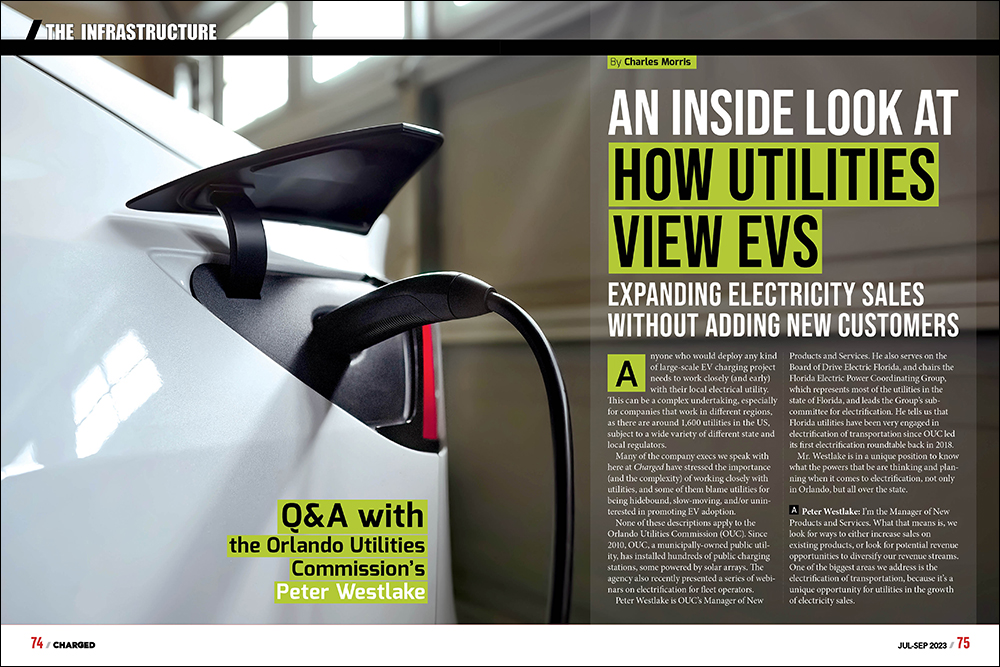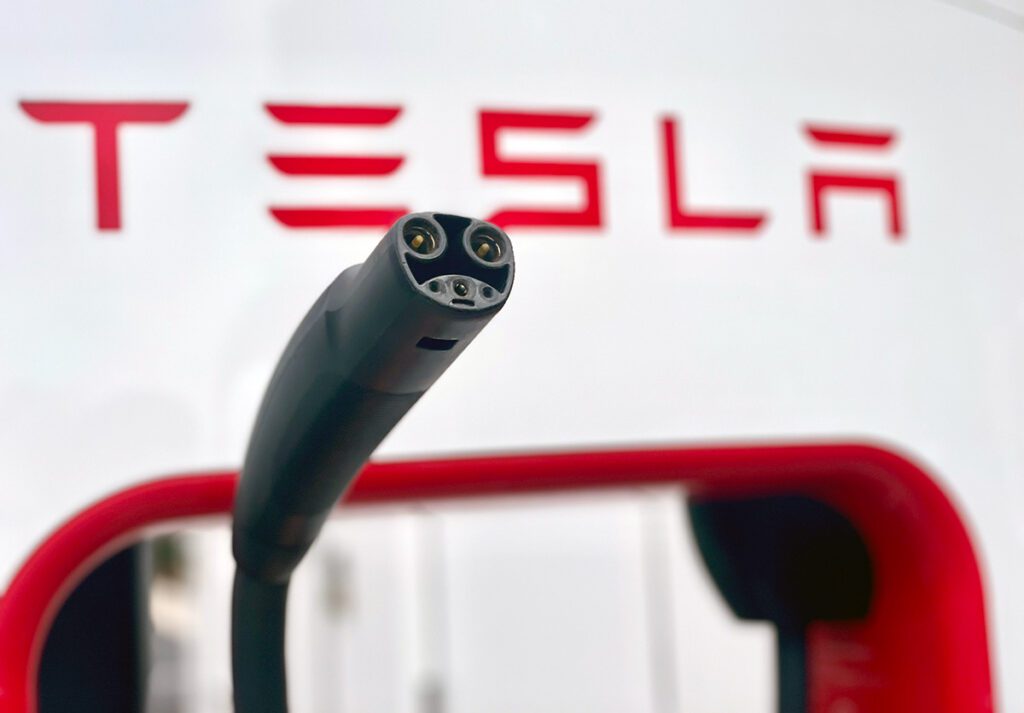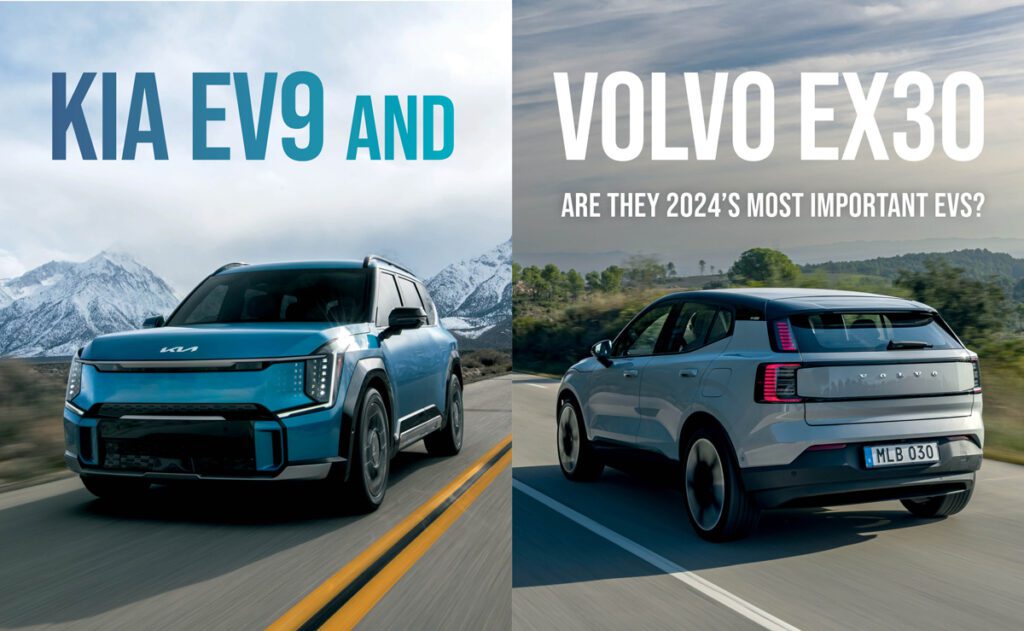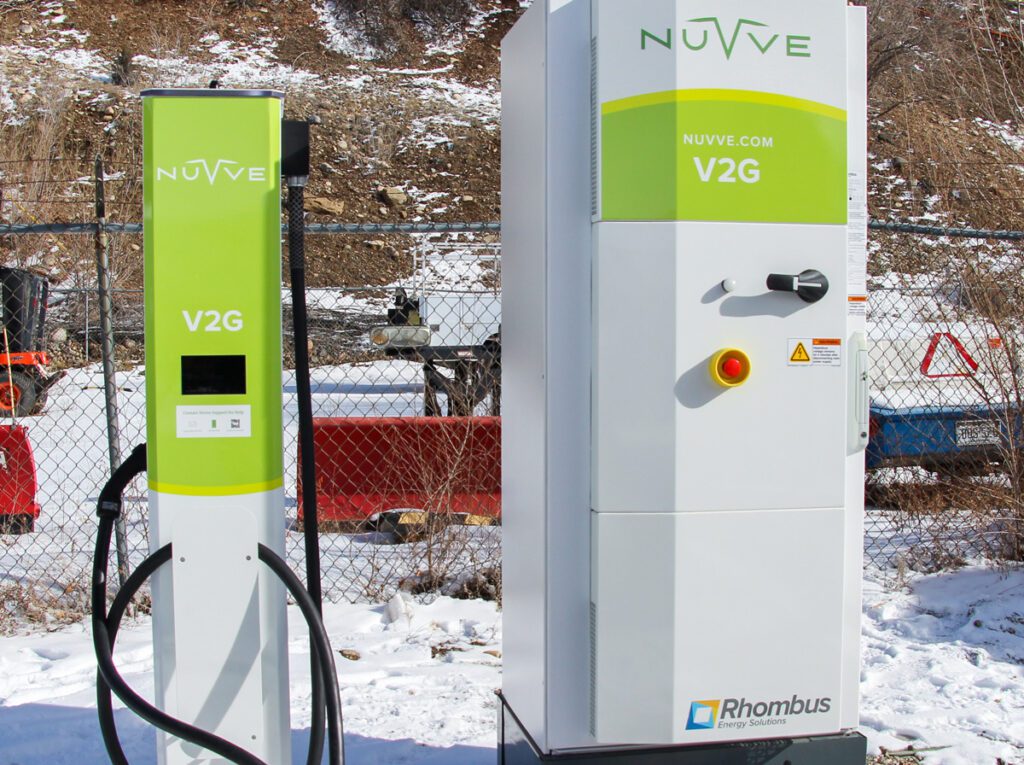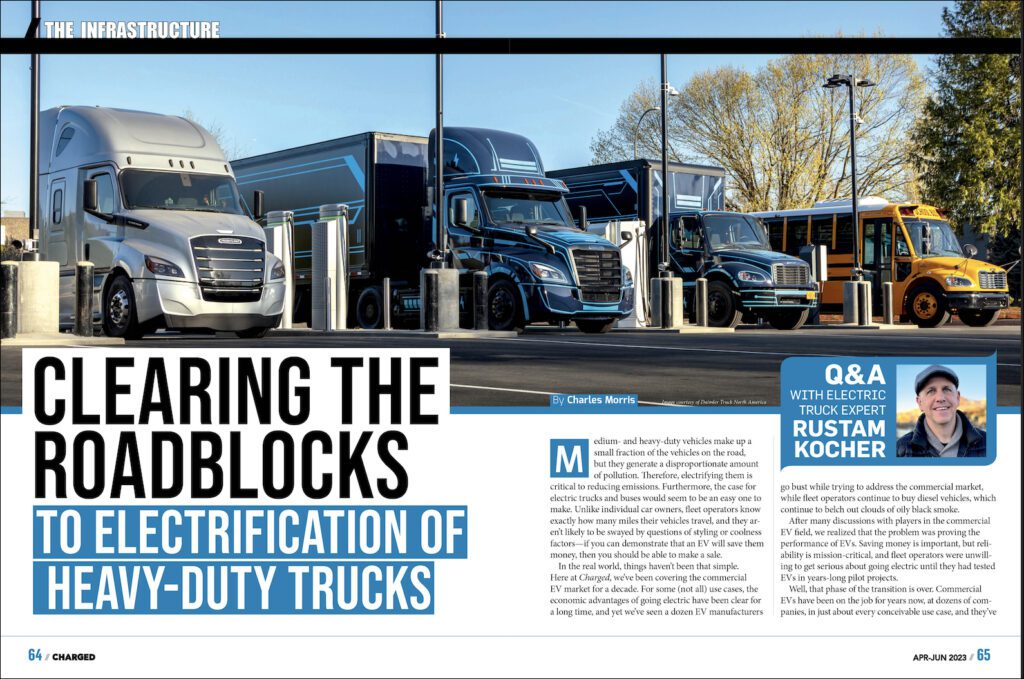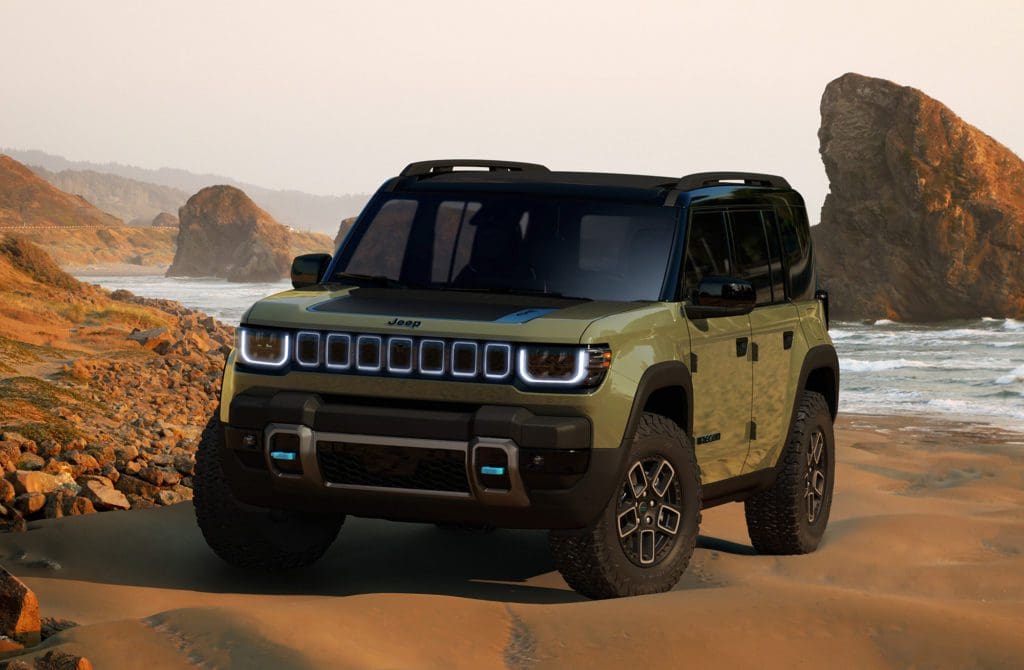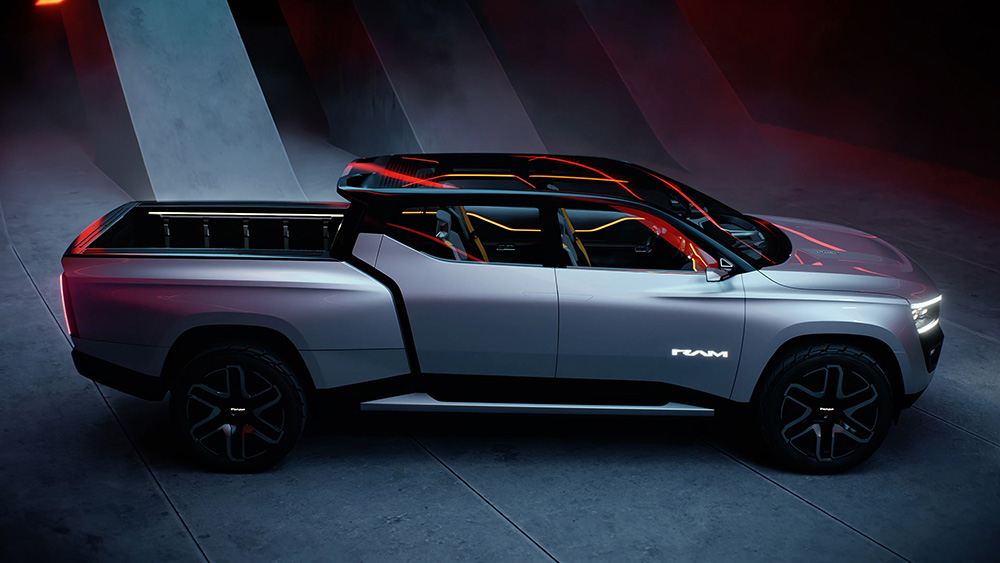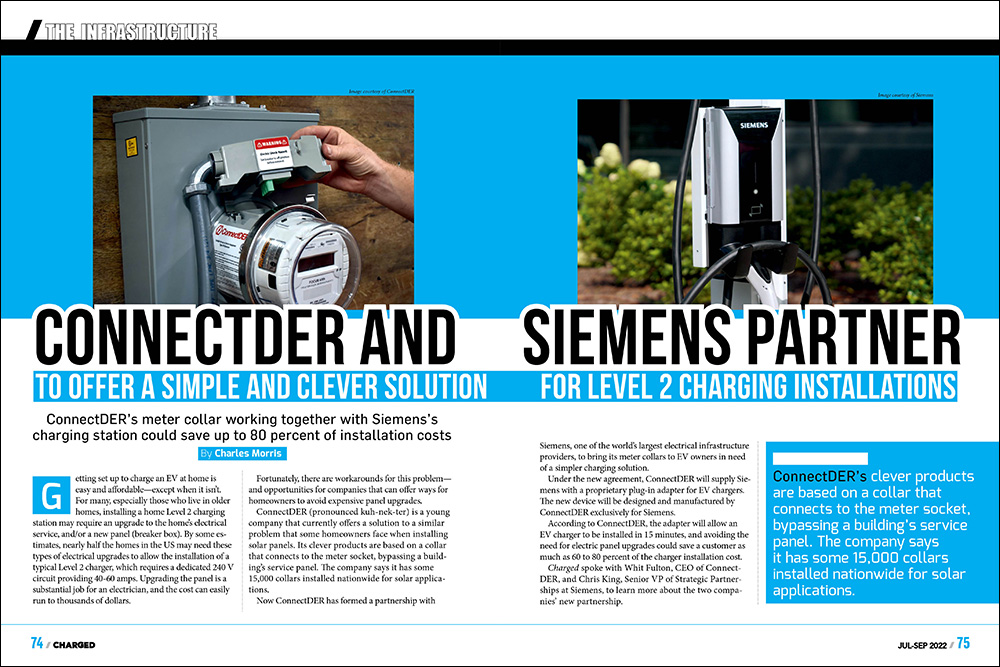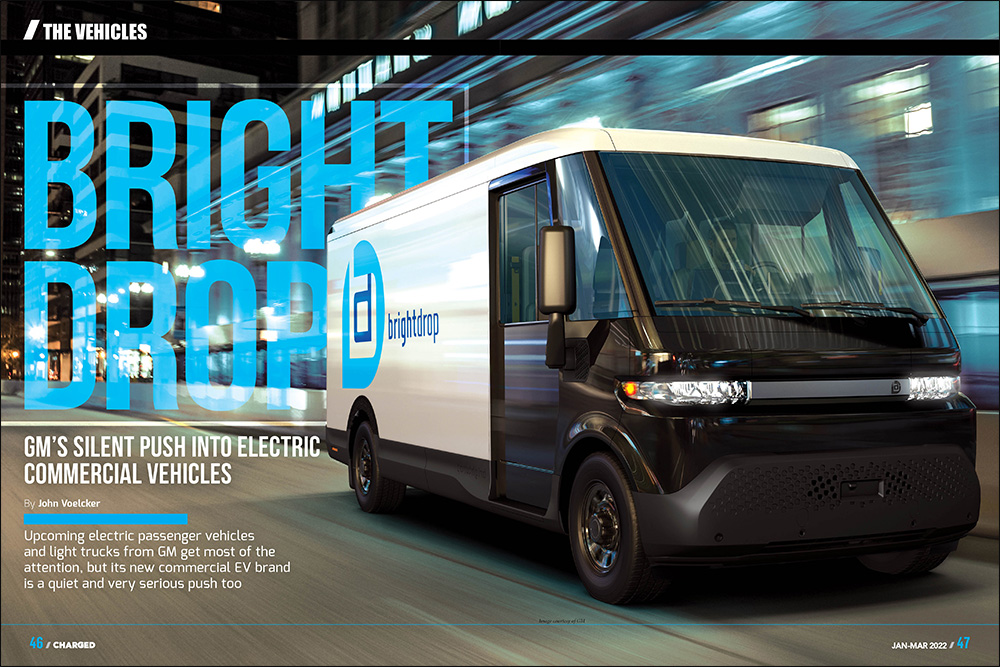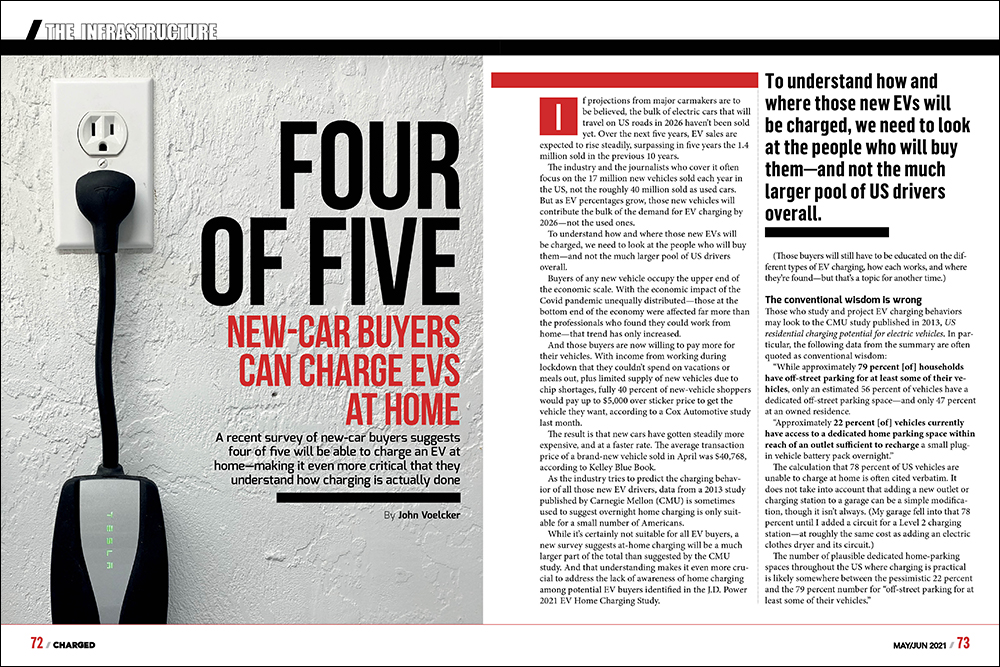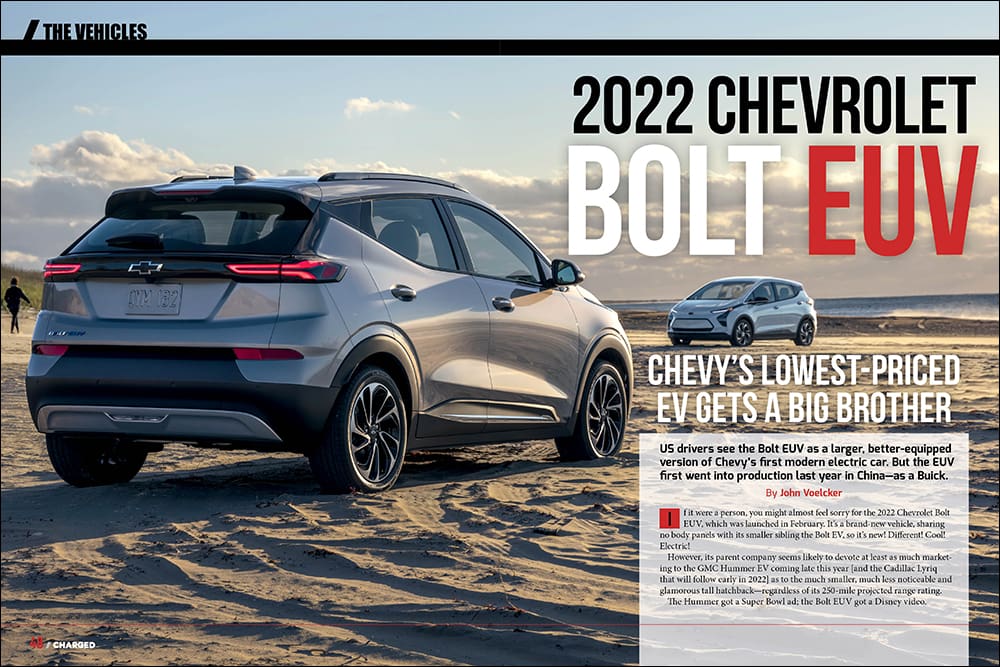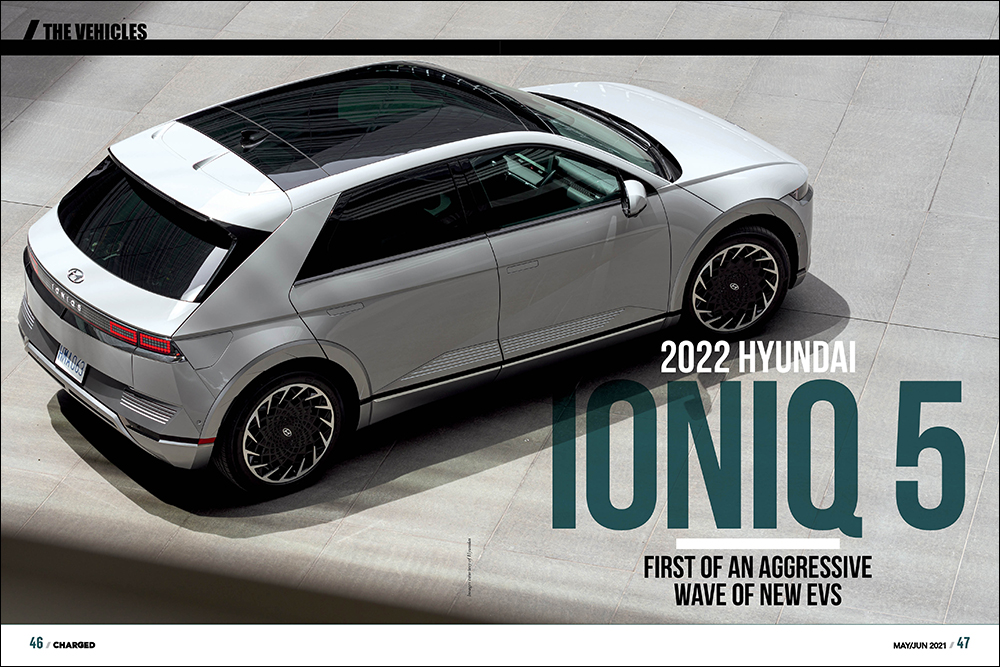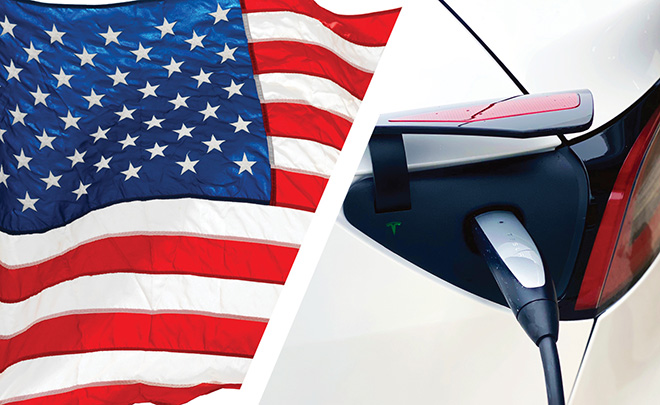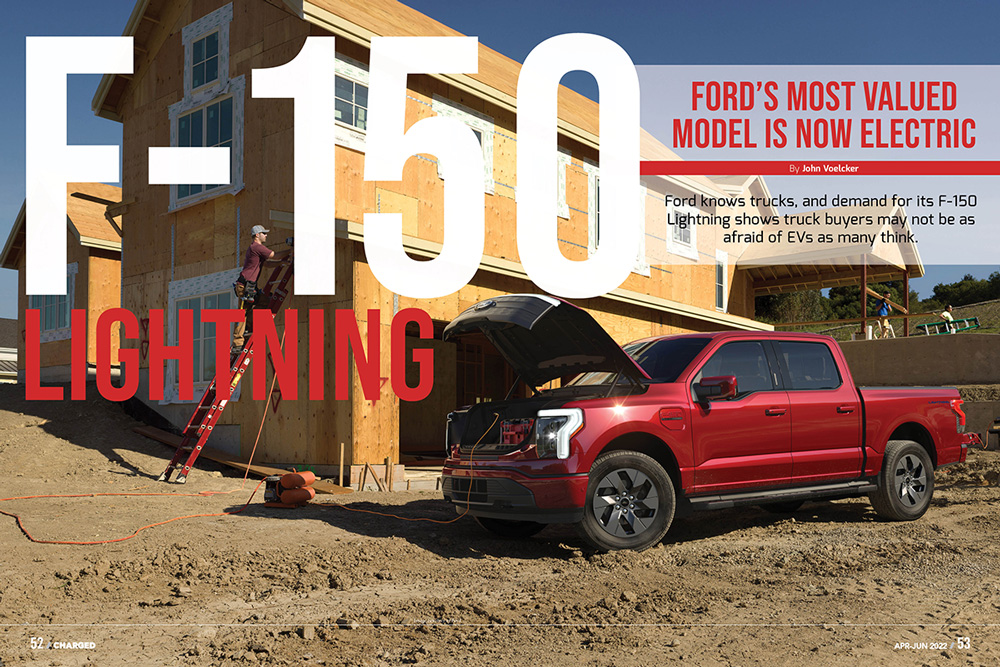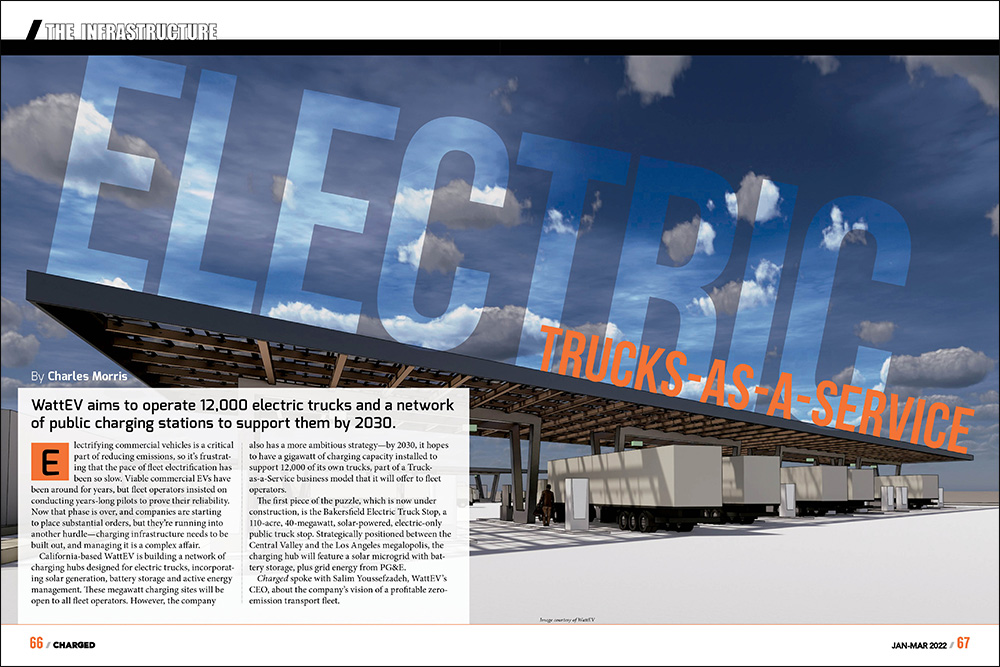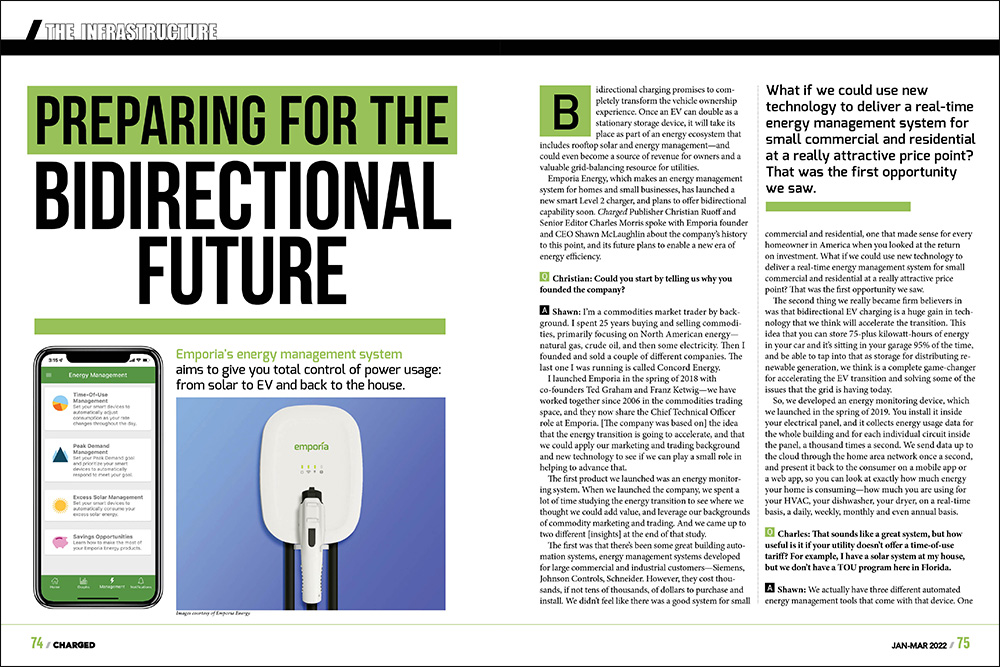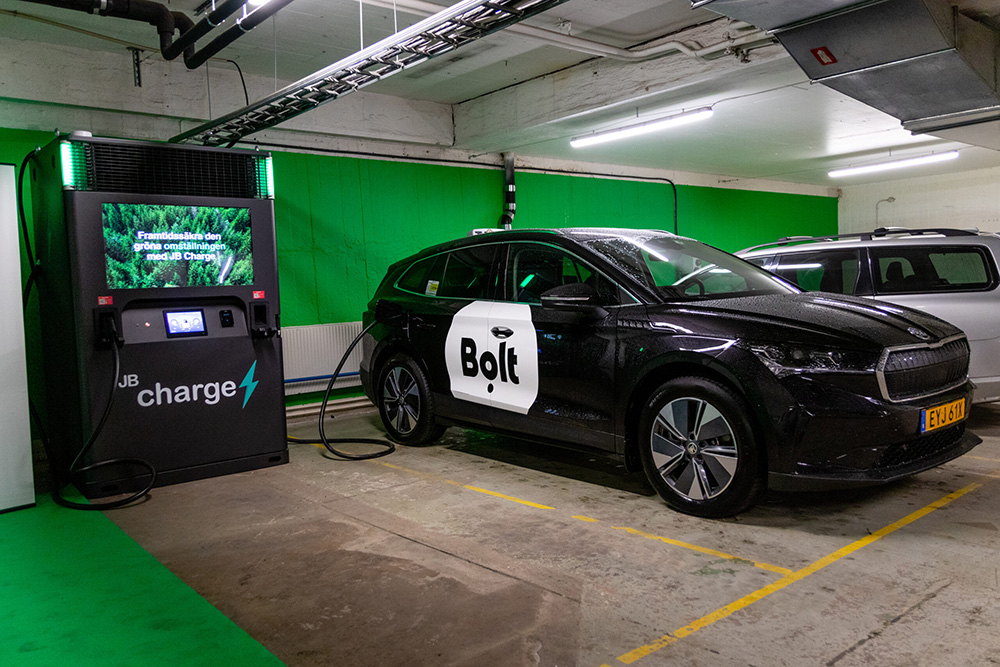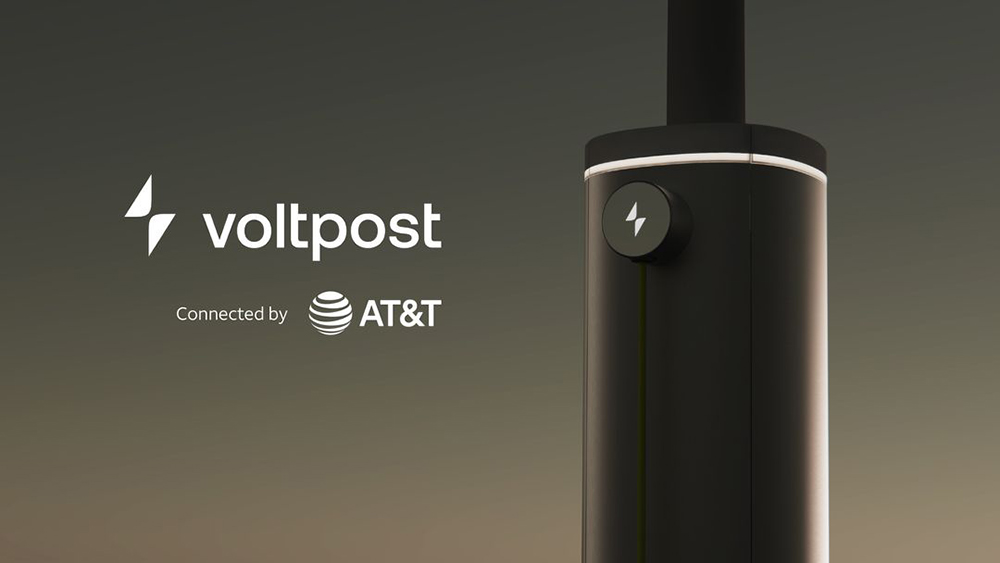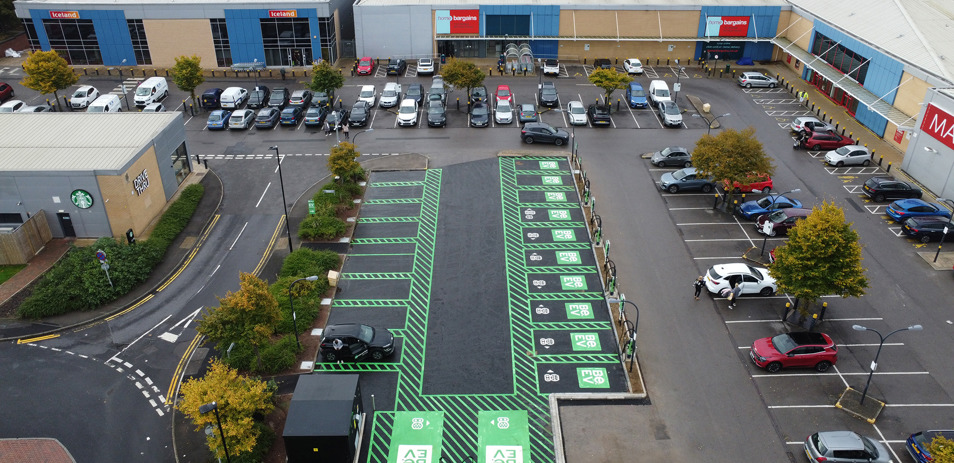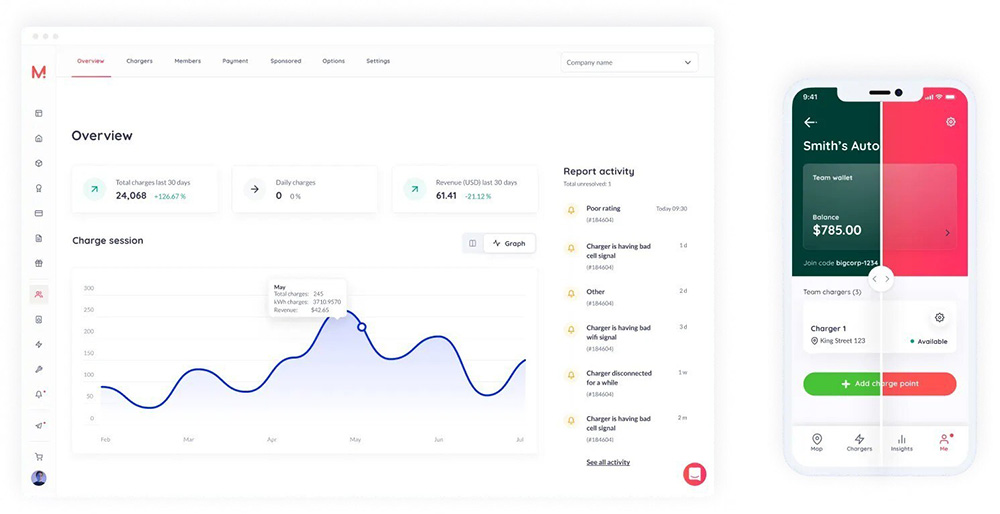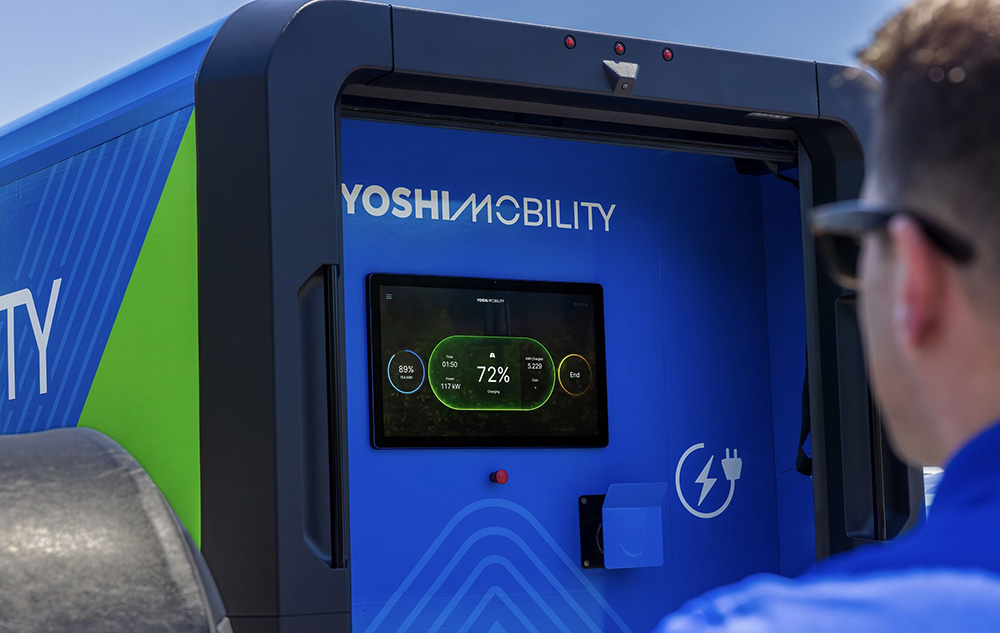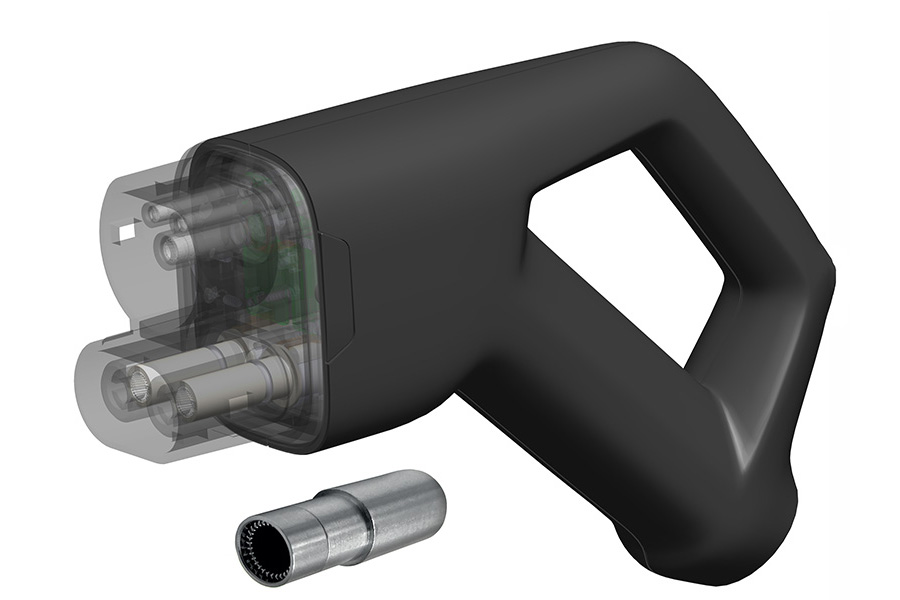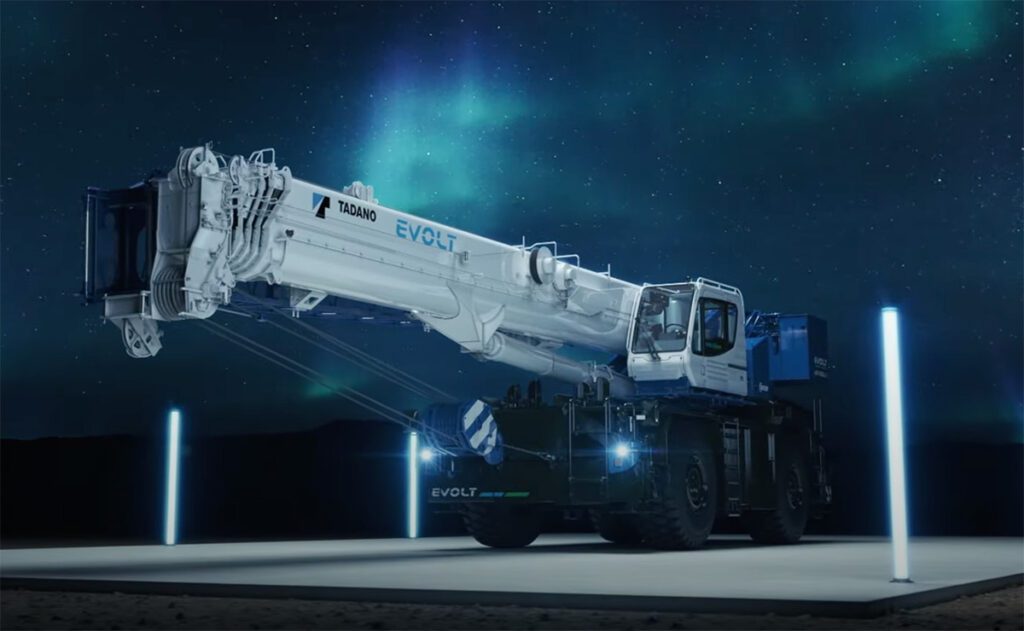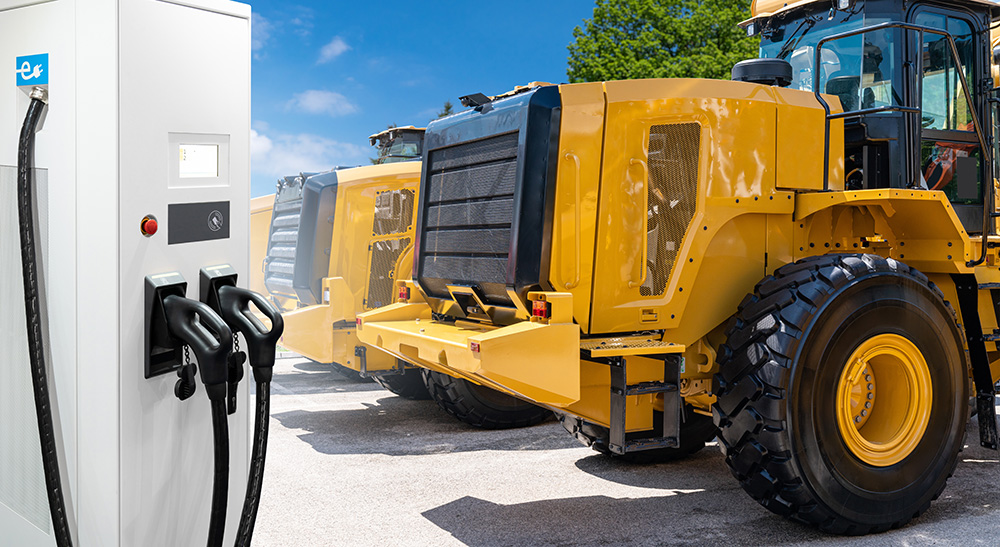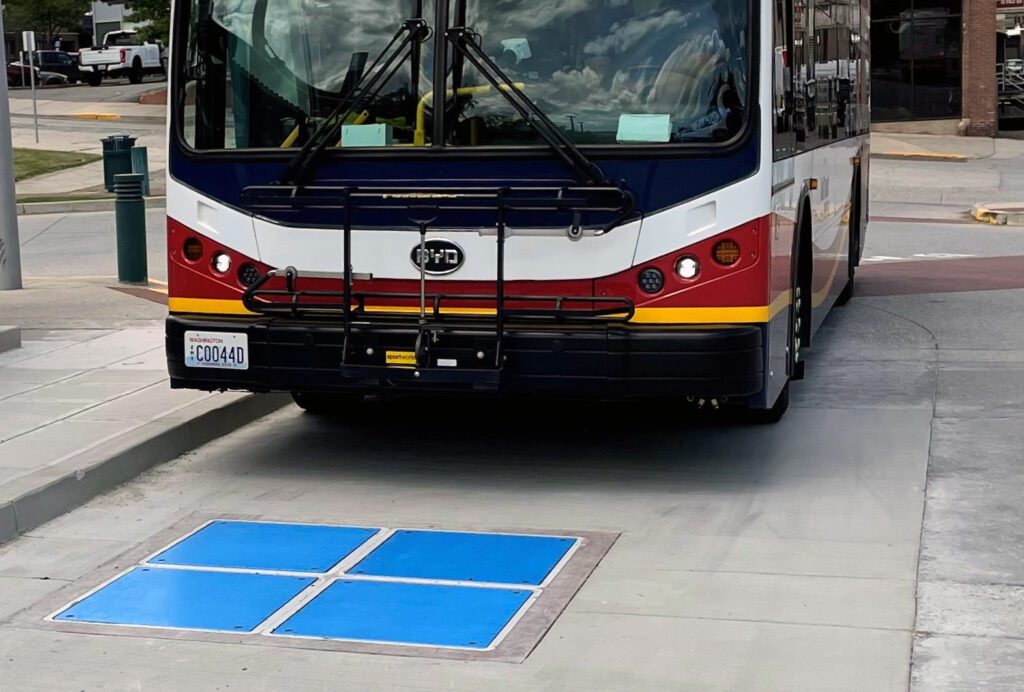In June, Cathy and I took our Tesla Roadster on an 11-day, 1,823-mile road trip. It was by far our longest trip in an electric car, and it worked well because the 240-mile range of the Roadster fit pretty well with our goal of a leisurely trip of about 200 miles of driving per day. The motivation for this trip was the Plug In America board meeting being held in Berkeley, CA, making it especially appropriate to be driving electric. We had a great time and a few adventures, but the most interesting thing from the EV perspective was our charging experience.
EVs are great for local driving, as drivers can do most of their charging at home overnight, which is far more convenient than making trips to the gas station. For most owners, 90% or more of charging occurs at home, so use of public charging stations is only occasional. But on a road trip, it’s all about public charging.

Our energy for the trip, totaling 554 kilowatt-hours (kWh), came from charging at home plus 14 locations on the road. At 11 locations, the charging was free. At one location, we paid just a little under the value of the electricity, and at the other three we paid between three and five times the cost of the electricity.
Assuming the US average rate of 11 cents per kWh, 554 kWh is worth $60.94. Amazingly, we paid $60.94, so the overpriced places balanced perfectly with the free locations. Using these charging locations, we traveled 1,823 miles on less money than many people spend on a single tank of gas.
At first glance, this sounds like we ripped off the free charging places while the few places that made us pay for charging made out like bandits. However, the businesses that made the most money from our trip all gave us “free” charging. Cathy planned our trip very carefully so that we could do nearly all of our charging overnight, while we slept. Every place we stayed got our business because there was charging available, either at the motel/hotel or at an adjacent location. In total, we spent $1,559.77 at businesses that either provided charging or were close to charging.
The value of the electricity we consumed was just 4% of our total spending at charging sites for the trip, and about 2% for the sites where we spent the most. That’s the real value proposition for public charging infrastructure. Our experience shows that lodging can attract EV customers and earn customer loyalty by providing charging, and it costs just a few cents on the dollar to provide the charging at no cost. How many businesses are interested in attracting customers away from their competitors at a fraction of the cost of advertising?

For a site that installs EV charging and chooses a billing rate for use of the station, there’s far more at stake than profit made directly from billing. When Cathy is planning a trip and needs to choose a place to stay, she checks to see if charging is available. If one B&B offers free use of an outlet for charging our car overnight and another says it will cost us $20 (for $1.50 worth of electricity), we choose the one that’s not trying to gouge us on charging (generally out of ignorance rather than greed). If a hotel or restaurant gets their return on investment by attracting customers, the greatest return is earned by attracting the most customers, and that is going to be helped by providing charging priced at or below the cost of electricity. A site host can often make the most return on investment in charging equipment by giving the charging away for free.
However, at one location on this trip we ran into the opposite problem.
The Four Points Sheraton in Emeryville, CA, has a ChargePoint station, making it by far the closest EV-friendly hotel to our meeting location in Berkeley. The station is free, which seemed like a nice amenity until we arrived with a low, hot battery ready for some charging and cooling only to find the station in use by a Chevy Volt. It had been charging for about 3 hours, so it had at most about an hour of charging left to go. We checked into the room and headed out for dinner. When we got back, a Nissan LEAF had just plugged in with a low battery, needing perhaps as much as 7 or 8 hours of charging. At this point, the LEAF and the now fully-charged Volt were using the only two parking spaces with access to the charging station, so we couldn’t even use the slow 120 V charging option.
Neither the Volt nor the LEAF belonged to a hotel guest, which was a little frustrating since we had picked the hotel because it had charging. It wasn’t until 8:30 pm that the Volt owner showed up to collect his car, four hours after his charge had completed. With the Volt gone, I was at least able to plug into the 120 V outlet on the station. The next morning, after the LEAF had finished its charge, I was finally able to plug in to the Level 2 charging station. Because we were staying for two nights, it wasn’t terrible that we weren’t able to charge from the L2 station for the first 14 hours we were at the hotel. If we had been staying for just one night, this would have been a big problem, especially if another car had squeezed in when the LEAF left and plugged in before we could. When we left the next morning, there was a Prius Plug-in charging from the 120 V outlet while we topped of our charge before departing. When we got home, I checked the data from the EV charging infrastructure study I’ve been working on for Plug In America, and it showed that station to be one of the most-used ChargePoint stations in the country, averaging over 11 hours of use per day.
Because of the high use rate for that station, I can’t recommend the Emeryville Four Points Sheraton for EV drivers who need a charge and don’t have two days to babysit the charger and spring into position to charge as soon as the station is available. In order to preserve the value of that charging amenity for their potential guests, the hotel needs to either install more stations or lower the use rate by non-guests by billing use of the station. As an EV supporter, I want to see public charging stations get as much use as possible, so I applaud the Four Points for supplying an obviously highly valued station, but as an EV driver in need of charge, I want stations to be available when I need them.
Much as Wi-Fi at hotels has evolved over the past 15 years from being rare and expensive to ubiquitous and often free, I expect that charging provided at or below the cost of electricity will become a necessary amenity provided by hotels and motels that want to be competitive in attracting customers.
This article originally appeared in Charged Issue 4 – AUG/SEP 2012



